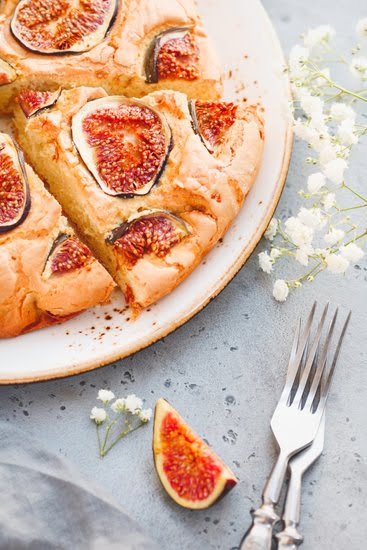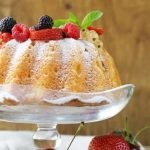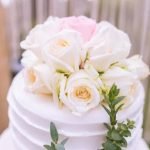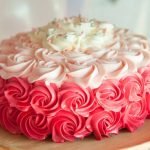Are you looking to learn how to decorate a cake with ganache? Ganache is a versatile and delicious ingredient that can be used to create stunning cake decorations.
In this article, we will explore the art of cake decorating with ganache, from understanding what ganache is and its uses in decorating to troubleshooting common issues when using ganache. Whether you are a beginner or an experienced baker, these tips and techniques will help you achieve beautiful results when decorating your cakes with ganache.
Ganache is a velvety smooth mixture made from chocolate and cream, and it has become a popular choice for cake decorators due to its richness and versatility. It can be used to create a variety of decorative effects, from glossy finishes to intricate designs. Understanding how to properly make and apply ganache can take your cake decorating skills to the next level.
In the following sections, we will cover everything you need to know about using ganache for cake decoration. This includes choosing the right cake for ganache, making the perfect ganache, preparing the cake for ganache application, applying the ganache with precision, creating decorative designs, troubleshooting common issues, and adding final touches for a stunning presentation. By the end of this article, you will be equipped with the knowledge and techniques needed to decorate your cakes with beautiful ganache designs.
Choosing the Right Cake for Ganache
When it comes to decorating a cake with ganache, choosing the right type of cake is crucial for achieving the best results. The texture and flavor of the cake will determine how well the ganache adheres to the surface and how visually appealing the final result will be. Here are some tips on selecting the perfect cake for decorating with ganache.
Consider the Texture
The texture of the cake plays a significant role in how well it will hold up to ganache. A dense and sturdy cake, such as a pound cake or a chocolate mud cake, is ideal for ganache decorating, as it provides a stable base for the ganache and prevents it from sinking into the cake’s surface. Light and fluffy cakes, such as chiffon or sponge cakes, may not be as suitable for ganache decoration due to their delicate texture.
Flavor Compatibility
It’s essential to consider the flavor of both the cake and the ganache when selecting a cake for decorating. For example, a rich chocolate ganache pairs beautifully with a moist chocolate fudge cake, creating a decadent and indulgent dessert. Similarly, a lighter white chocolate ganache complements a vanilla or citrus-flavored cake beautifully. Consider how the flavors will work together to create a harmonious taste experience.
Moisture Content
The moisture content of the cake can also impact its suitability for ganache decoration. Cakes that are too moist or overly crumbly may not provide an optimal surface for applying ganache smoothly. It’s important to choose a cake that strikes a balance in moisture content-a moist but not overly wet interior is ideal for ensuring that the ganache sets properly and holds its shape when applied.
By considering these factors when choosing a cake for decorating with ganache, you can ensure that your final creation is not only visually stunning but also delicious and enjoyable to eat. Ganache decoration can truly elevate any type of cake, so selecting the perfect base is an essential first step in achieving professional-quality results at home.
Making the Perfect Ganache
To make a basic dark chocolate ganache, you’ll need equal parts of chopped chocolate and heavy cream. For example, if you’re using 8 ounces of chocolate, you’ll need 8 ounces of heavy cream. You can also adjust the ratio depending on your desired consistency – more chocolate for a thicker ganache or more cream for a thinner ganache.
Once you have the ingredients ready, heat the heavy cream in a saucepan until it begins to simmer. Make sure not to let it boil. Place the chopped chocolate in a heatproof bowl and pour the hot cream over it. Let it sit for a few minutes to allow the chocolate to soften, then gently stir until the mixture is smooth and glossy.
After making your ganache, it’s essential to let it cool and thicken before using it for decorating your cake. You can achieve different consistencies of ganache by adjusting its temperature – let it cool at room temperature for thicker ganache or chill it in the refrigerator for a firmer texture that can be used for piping decorative designs on your cake.
| Ingredient | Amount |
|---|---|
| Chopped Chocolate | 8 ounces |
| Heavy Cream | 8 ounces |
Preparing the Cake for Ganache
When preparing a cake for decorating with ganache, it is important to ensure that the cake is properly prepped in order to achieve the best results. Here are some tips on how to prepare your cake before applying the ganache:
- Level the Cake: Before applying ganache, it’s essential to ensure that your cake is level. Use a serrated knife or a cake leveler to trim off any uneven or domed tops, creating a flat surface for the ganache.
- Crumb Coat: To prevent any loose crumbs from getting into the ganache, it’s advisable to apply a thin layer of frosting or ganache all over the cake before adding the final layer of ganache. This will create a smooth base and seal in any stray crumbs.
- Chill the Cake: After leveling and crumb coating the cake, it’s important to chill it in the refrigerator for at least 30 minutes. Chilling the cake will help firm up the frosting or ganache, making it easier to work with when applying the final layer of ganache.
Properly preparing the cake for ganache application is crucial in achieving a flawless finish. Taking these steps will ensure that your cake is ready for the next stage of decorating.
Once you have followed these tips and prepared your cake accordingly, you can then move on to applying the smooth and glossy ganache using your preferred techniques such as pouring, spreading, or piping.
Applying Ganache to the Cake
When it comes to decorating a cake with ganache, achieving a flawless finish is key to creating a professional-looking and delicious dessert. Whether you’re a beginner or an experienced baker, there are several techniques that can help you achieve a smooth and polished ganache coating. Here are some tips for applying ganache to the cake:
- Prepare the cake: Before applying the ganache, make sure your cake is level and has been properly crumb-coated with buttercream or frosting. This will provide a smooth base for the ganache to adhere to.
- Use the right temperature: The temperature of the ganache is crucial when applying it to the cake. The ideal temperature for ganache is around 90-95°F (32-35°C). This will allow the ganache to be fluid enough to spread easily, but not too runny that it slides off the sides of the cake.
- Apply in layers: Start by pouring a generous amount of ganache on top of the cake and using an offset spatula to gently push it over the edges, letting it drip down naturally. Once the top and sides are covered, use the spatula to smooth out any imperfections and create an even layer of ganache.
Using these techniques will help you achieve a flawless finish when decorating your cake with ganache.
If you want to add some texture or decorative elements to your ganache-covered cake, consider using different tools such as combs, textured scrapers or piping bags with various tips. You can create beautiful patterns and designs by adding swirls, waves, or other textures with these tools before the ganache sets.
Remember that practice makes perfect when it comes to working with ganache, so don’t be discouraged if your first attempt isn’t flawless. With time and patience, you’ll soon master the art of decorating cakes with ganache like a pro.
Creating Decorative Designs With Ganache
Choosing the Right Consistency
The key to creating decorative designs with ganache is achieving the right consistency. If the ganache is too runny, it won’t hold its shape when piping. On the other hand, if it’s too thick, it will be difficult to work with.
To achieve the perfect consistency, make sure to let the ganache cool and thicken slightly before using it for decorating. A good rule of thumb is to let it sit at room temperature for about 15-20 minutes after making it.
Using Piping Bags and Tips
Piping bags and tips are essential tools for creating decorative designs with ganache. Different tips can be used to create different effects, such as stars, rosettes, or simple lines. Before you start decorating, practice on a piece of parchment paper to get a feel for how the ganache flows through the tip and how much pressure to apply.
Adding Color and Flavor
Ganache can also be flavored and colored to enhance its decorative capabilities. For example, adding a few drops of food coloring can transform white chocolate ganache into a vibrant hue that complements your cake’s theme or occasion. Additionally, adding extracts like vanilla or almond can give your ganache an extra layer of flavor that complements the cake.
By following these tips and tricks, you can elevate your cake decorating skills by creating beautiful patterns and designs using ganache. Experiment with different techniques and have fun with it – ganache is a versatile medium that allows for endless creativity.
Troubleshooting Common Ganache Decorating Issues
Ganache is a versatile and delicious option for decorating cakes, but it can sometimes present challenges. Here are some common issues that can arise when using ganache to decorate a cake, along with tips on how to fix them.
One common problem when working with ganache is achieving the right consistency. If your ganache is too runny, try refrigerating it for a short period of time to allow it to thicken slightly before applying it to the cake. On the other hand, if your ganache is too thick and difficult to spread, gently heating it in the microwave for a few seconds at a time can help soften it to the desired consistency.
Another issue that may occur when using ganache to decorate a cake is air bubbles forming in the mixture. To avoid this problem, be sure to tap the cake gently on a counter or table after applying the ganache in order to release any trapped air bubbles. You can also use a toothpick or small spatula to smooth out any imperfections in the ganache once it has been applied to the cake.
Lastly, if you find that your ganache isn’t setting properly and remains tacky or sticky even after cooling, you may need to adjust the ratio of cream to chocolate in your recipe. Adding more chocolate can help firm up the ganache and improve its texture for decorating purposes.
| Troubleshooting Issue | Troubleshooting Tip |
|---|---|
| Incorrect Ganace Consistency | Refrigerate runny ganace; gently heat thickened ganace |
| Air Bubbles in Ganace | Tap cake after applying gance; smooth out imperfections with toothpick or spatula |
| Ganace not setting properly | Adjust cream-to-chocolate ratio; add more chocolate for firmer texture |
Finishing Touches
In conclusion, learning how to decorate a cake with ganache can truly elevate your baking game. Ganache is a versatile and delicious way to add both flavor and visual appeal to any cake. By following the step-by-step guide provided in this article, you can create a show-stopping dessert that will impress your friends and family.
Once you have applied the ganache to your cake, it’s time for the finishing touches. Depending on the occasion, you can add final decorations and enhancements to make your ganache-decorated cake truly stunning. Whether it’s fresh fruit, edible flowers, or a dusting of powdered sugar, these extra touches will take your cake from great to extraordinary.
In addition to enhancing the appearance of your cake, adding final decorations can also help tie together the overall theme or flavor profile of the dessert. For example, if you’ve used dark chocolate ganache on a rich chocolate cake, consider topping it with some raspberries for a burst of freshness. These small details can make a big difference in the presentation and taste of your ganache-decorated cake showcasing just how versatile and beautiful this decorating method can be.

Welcome to our cake decorating blog! My name is Destiny Flores, and I am the proud owner of a cake decorating business named Cake Karma. Our mission is to provide delicious, beautiful cakes for all occasions. We specialize in creating custom cakes that are tailored specifically to each customer’s individual needs and tastes.





